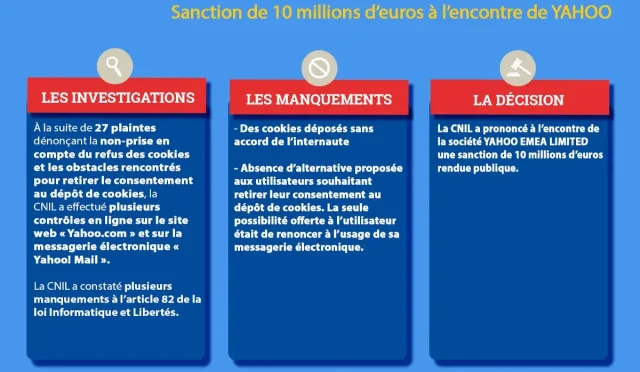Wealth Inequality in Australia: Housing Prices and Trends
Wealth inequality in Australia has reached troubling levels, as demonstrated by a significant rise in housing prices that has made home ownership increasingly elusive for many.
With the average home price surging past the $1 million mark, many Australians are grappling with the implications of this wealth disparity. The wealth of the richest Australians continues to balloon, evidencing an alarming trend where property values and wealth growth far outpace income increases. While the average wage has only seen a modest rise, the total wealth held by the top 200 individuals now constitutes a staggering 24.5% of the nation’s GDP. This growing chasm between the affluent and everyone else raises vital questions about economic equity and the impact of rising property values on the broader Australian society.
The economic landscape in Australia is increasingly characterized by the widening gap between the affluent and the rest of the population, often referred to as economic disparity or wealth concentration. As housing affordability plummets, many are left struggling to enter the property market amidst skyrocketing real estate prices. Moreover, the financial fortitude of the wealthiest citizens is magnified as their wealth continues to increase at rates far superior to those of average earners. This systemic issue emphasizes the importance of understanding income discrepancies and the consequential implications for those unable to accumulate wealth. As we delve deeper into the dynamics of wealth distribution in Australia, it becomes clear that urgent reforms are necessary to address this growing inequity.
Understanding Wealth Inequality in Australia
Wealth inequality in Australia has reached concerning levels, reflecting a stark divide between the richest and the rest. Recent data demonstrates that the wealthiest 20% of Australians own a staggering 62% of the nation’s total wealth while the bottom 20% possess less than 1%. This concentration of wealth is not just a statistic; it shapes communities and influences access to opportunities, education, and quality of life. As housing prices continue to climb, the divide becomes more pronounced, further entrenching the socioeconomic barriers faced by lower and middle-income families.
Moreover, the increasing property values contribute significantly to wealth growth among the richest Australians, who invest in real estate, stock markets, and other lucrative assets. As the average home price surpasses $1 million, those who already own property see their assets appreciate, while renters struggle with affordability. This disparity raises critical questions about equity and sustainability, urging policymakers to consider reforms that could address the widening gap in wealth distribution. Without intervention, the cycle of wealth concentration is likely to perpetuate, placing a heavy burden on future generations.
Frequently Asked Questions
What is the current state of wealth inequality in Australia?
Wealth inequality in Australia has reached alarming levels, particularly as the richest Australians have seen a substantial increase in their wealth. According to recent data, the wealth of the top 200 richest individuals represents approximately 24.5% of Australia’s annual GDP, highlighting a significant concentration of wealth at the top.
How do rising housing prices contribute to wealth inequality in Australia?
Rising housing prices play a critical role in exacerbating wealth inequality in Australia. With the average home price exceeding $1 million, property values are outpacing wage growth. This increased value primarily benefits property owners, further widening the wealth gap between those who own homes and those who do not.
What percentage of household wealth is held by the richest Australians?
In Australia, the richest 20% of households control 62% of all wealth. This concentration of wealth showcases the disparity present within the economic landscape, where a small segment of the population holds a disproportionate share of assets.
How has wealth growth compared to income growth in Australia?
Over the past 25 years, wealth growth in Australia has consistently outpaced income growth. For instance, while income in the bottom 40% saw increases of just 24%, those in the 90th percentile experienced a wealth growth of 39%, highlighting the widening chasm between different socio-economic groups.
What is the impact of property values on overall wealth in Australia?
Property values significantly impact total household wealth in Australia, accounting for roughly 55% of all household assets. As property values rise, so does the net worth of those who own real estate, compounding wealth inequality further as non-owners struggle with affordability and asset accumulation.
Why is there insufficient taxation on wealth compared to income in Australia?
Wealth in Australia is largely untaxed. In contrast to earnings, which are subject to income tax, rising property values and other forms of wealth see minimal taxation. This discrepancy allows wealth to grow unchecked among the richest Australians, perpetuating the cycle of inequality.
What role do superannuation and taxation play in wealth inequality in Australia?
Superannuation and taxation policies contribute to wealth inequality in Australia, particularly favoring the wealthy. Modifications to superannuation tax concessions often face resistance, as only the ultra-wealthy stand to be affected, highlighting a system that benefits those already at the top of the wealth spectrum.
How does Australia’s wealth inequality compare internationally?
Australia’s wealth inequality is among the highest in the world. The concentration of wealth in the hands of the richest Australians reflects global trends, but also indicates systemic issues in taxation and property ownership that are specific to the Australian context.
What should be done to address wealth inequality in Australia?
To address wealth inequality in Australia, policies should focus on fairer taxation of wealth, increased access to affordable housing, and comprehensive reforms of superannuation. These measures would help mitigate the wealth gap and support broader economic equity within society.
| Key Point | Explanation |
|---|---|
| Average Home Price | The average home price in Australia has surpassed $1 million, raising concerns over housing affordability. |
| Wealth vs. Income | Wealth, differing from income, is the total value of what a person owns at a given time; the wealth of the richest Australians has been significantly increasing. |
| Concentration of Wealth | The top 20% of earners control 62% of total wealth, indicating an alarming wealth inequality. |
| Housing Stock Growth | The value of Australia’s housing stock grew by $125.3 billion in just one quarter, highlighting the disparity between growth in wealth and income. |
| Inequality in Wealth Growth | Wealth growth is faster for the rich, with those at the top experiencing a 39% increase compared to 24% for those in the 40th percentile. |
| Taxation Issues | Income is heavily taxed while wealth, particularly in rising property values, is largely untaxed, contributing to growing wealth inequality. |
Summary
Wealth inequality in Australia has become a pressing issue, as evidenced by the significant increases in housing prices and the concentration of wealth among the richest citizens. The latest figures reveal alarming trends where the wealth of the richest 200 individuals now accounts for 24.5% of Australia’s GDP, while the top 20% hold 62% of all wealth. This disparity is exacerbated by the lack of appropriate taxation on wealth gains compared to income, leading to widening economic gaps within the country. Addressing wealth inequality in Australia is essential for fostering a more equitable society.








